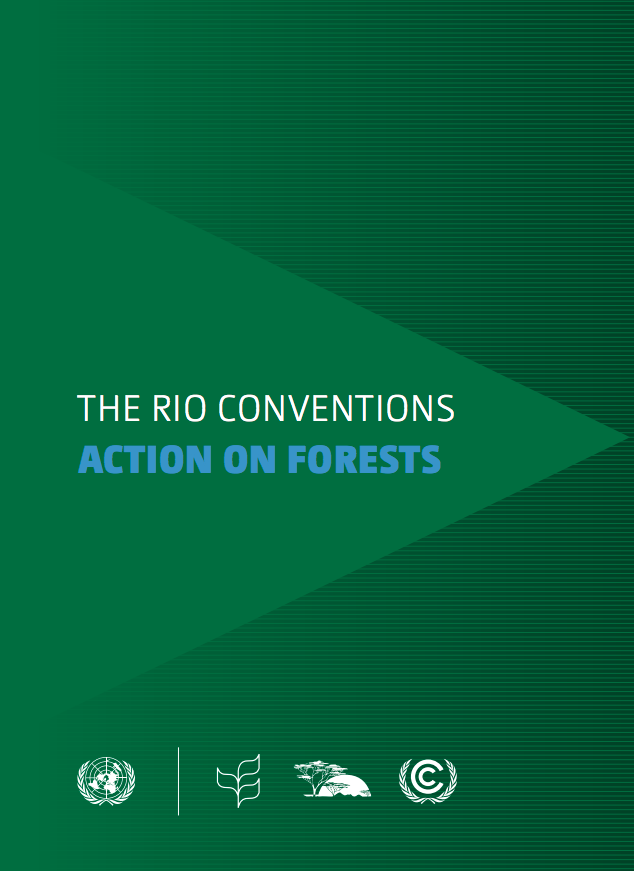Resource information
The importance of forests in climate change, biodiversity and desertification/land degradation
Forests cover approximately 30 per cent of the Earth’s land surface and provide important ecosystem goods and services, including food, fodder, water, shelter, nutrient cycling, air purification, and cultural and recreational amenities. Forests also store carbon, provide habitat for a wide range of species and help alleviate land degradation and desertification.
All three of the Rio Conventions, the Convention on Biological Diversity (CBD), the United Nations Convention to Combat Desertification (UNCCD) and the United Nations Framework Convention on Climate Change (UNFCCC ), acknowledge the important contribution of forests to the achievement of their respective goals and objectives.
This information brochure provides a snapshot of the synergies and linkages with respect to forests between combating climate change and desertification and the conservation and sustainable use of biodiversity.
Forest-related partnerships of the Rio Conventions
The secretariats of the Rio Conventions collaborate with other relevant organizations on forest issues, including through the Collaborative Partnership on Forests (CPF) (), which consists of 14 international organizations, bodies and convention secretariats that have susbstantial programmes on forests. The mission of the CPF is to promote sustainable management of all types of forests and to strengthen longterm political commitment to this end.
The secretariats collaborate closely with other United Nations organizations working on forest issues, including the United Nations Forum on Forests, the Food and Agriculture Organization of the United Nations, the United Nations Development Programme and the United Nations Environment Programme. Other international organizations with implementation activities in the forest and land management sectors that the secretariats collaborate closely with are the World Bank, the International Tropical Timber Organization and the Global Environment Facility (GEF). The GEF strategy on sustainable forest management is based on the principle that forest projects can and should contribute to several objectives of the Rio Conventions simultaneously.
In all these collaborative interactions, the secretariats advocate the strengthening of the capacities of countries and the promotion of policies and actions to combat forest biodiversity loss, desertification, land degradation, deforestation and forest degradation, to reduce emissions from land use and land-use change activities and to support adaptation through maintaining ecosystem services and providing livelihood options.


